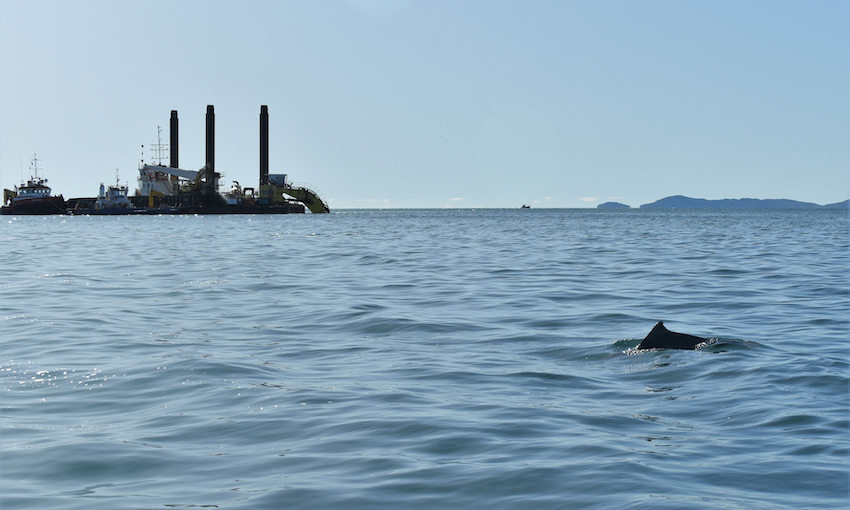LOCAL dolphin populations around Port of Townsville have not been impacted by channel upgrade works, according to data from the port’s dolphin monitoring program.
Experts from Flinders University, in collaboration with Southern Cross University and research consultancy Blue Planet Marine, have been monitoring dolphin populations in nearby Cleveland and Halifax Bay.
The research is being carried out as part of Port of Townsville’s $232 million Channel Upgrade project.
The project involves dredge works carried out over two years, widening the port’s shipping channel to accommodate ships of up to 300 metres in length.
The waters of Cleveland and Halifax Bay near the port are home to snubfin and humpback dolphins, which are both listed as vulnerable species.
Port of Townsville Channel Upgrade project senior project director Jason Mahlberg said the port is “acutely aware” of the sensitive environment it operates in.
He said marine fauna exclusion zones have been put in place around backhoe dredge Woomera, and dredge crews are prepared to stop work immediately if dolphins come too close to the dredge site.
“The Port of Townsville has invested more than $17 million in environmental management and monitoring programs as part of the Channel Upgrade project, including those covering dolphins, turtles, corals, seagrass and water quality,” Mr Mahlberg said.
“These programs not only inform decision making to ensure environmental best practise throughout the duration of the project, but also add to the many years of research the port and our partners have undertaken into the health of the marine environment in Cleveland Bay.”
Researchers from participating universities and Blue Planet Marine have been carrying out boat surveys and land-based observations to document the vulnerable dolphin species in the area.
Flinders University associate professor Guido Parra said dolphin populations around the port had remained stable since Channel Upgrade construction works commenced in 2020.
“We’re monitoring the dolphin populations to determine if there’s any impact of the construction activities on their distribution, abundance and behaviour,” Mr Parra said.
“The annual surveys from 2019 to 2021 have shown good news in that the populations of both species, although small, seem to be relatively stable and there has not been any changes in their distribution and abundance.”
Mr Parra said construction activities in 2020 and 2021 had not deterred the local dolphin population from swimming in waters around the port.
“Both snubfin and humpback dolphins use the area quite frequently to feed and socialise,” he said.
“They are still using the coastal waters of Cleveland Bay and Halifax Bay, so it seems like the construction activities so far have not had any detrimental impact on the dolphins.
“Data collected this year and in coming years will be vital to assessing whether there has been any significant impact on the dolphins.”

